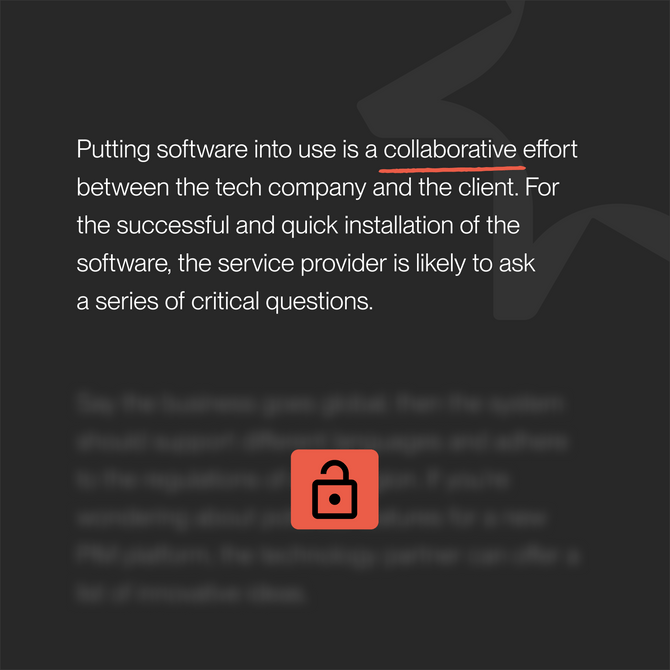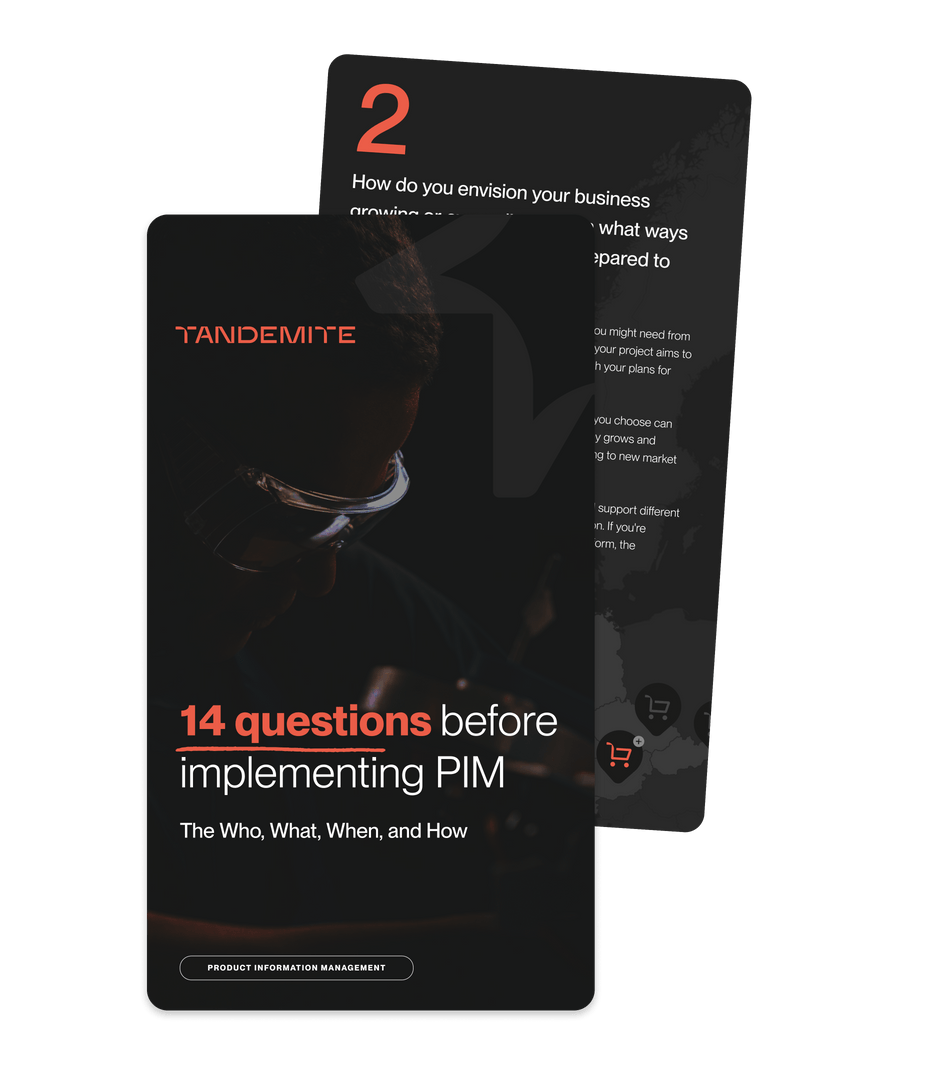WHAT YOU'LL LEARN
The key takeaways from the e-book:
- How to define realistic goals for PIM
- Key factors that affect time and budget
- What data to prepare and how
- Which departments must be involved early
- How to future-proof your PIM for growth
- Common pitfalls and how to avoid them




Get answers to your top PIM questions with our experts
How can a well-planned PIM implementation (guided by these questions) help businesses struggling with poor product data management?
A well-planned PIM implementation, grounded in the 14 strategic questions from this guide, helps transform chaotic product data into a centralized, structured, and scalable asset. For businesses struggling with fragmented spreadsheets, outdated information, or inconsistent product content across platforms, asking the right questions upfront leads to:
- clear business goals aligned with measurable outcomes (e.g., faster product launches, reduced return rates),
- streamlined collaboration between marketing, product, IT, and sales teams,
- faster time-to-market thanks to automation and improved workflows,
- improved customer experience with accurate, rich, and localized product information,
- future-proof scalability for global growth and omnichannel expansion.
What are the risks or negative consequences of not asking these questions before implementing PIM?
Jumping into PIM without proper discovery and planning often leads to expensive, time-consuming mistakes. Failing to ask these foundational questions can result in: misaligned goals, underestimated complexity, scope creep, poor user adoption, inefficient data migration, security and access issues, longer ROI timelines. This guide helps avoid that by making sure your strategy, structure, and team are aligned from day one.
How long does a PIM implementation usually take?
Implementation timelines vary based on data complexity, integrations, and scope. A typical project may take anywhere from 8 to 20 weeks. The preparation phase (analysis, data mapping, defining goals) is often just as important as development itself.
Is it possible to start small and scale later?
Yes – a modular or phased rollout is often recommended. You can begin with core product lines, essential features, and key channels, then expand over time. We help prioritize what's most valuable for your business today, without losing sight of tomorrow.
What should a strong PIM strategy include?
Without a strategy, even the best PIM tool may underperform. A well-defined PIM strategy should cover: business goals and KPIs, data governance and roles, technology architecture and integrations, future scalability (markets, products, teams), enrichment workflows, change management and training.
How can PIM help improve product data quality?
PIM platforms use validation rules, completeness scoring, and approval workflows to ensure your product data is accurate, standardized, and rich. You can monitor and enforce data quality KPIs in real time.
What makes B2B PIM implementation different?
B2B platforms often require features like customer-specific catalogs, tiered pricing and bulk rules, technical product attributes, integration with ERP or CPQ tools. A PIM solution for B2B must support these complexities and allow for segmentation and personalization of product data.
Download
Is this guide right for you?
Whether you’re navigating early decisions or finalizing your plans with an implementation partner – this guide sets you up for success. The e-book explains 14 main PIM pre-implementation questions and provides extra supporting questions to ensure you grasp every detail:
- Feature prioritization: Determine the must-have features for your business success (Question #4)
- Data landscape analysis: Gain a clear picture of your current data organization and migration needs (Question #5 & #10)
- Building your implementation team: Identify key stakeholders and users for a smooth process (Question #7 & #8)
- Long-term support and maintenance: Understand the critical aspects of ongoing PIM health (Question #13)
At Tandemite, we’ve helped dozens of companies implement PIM platforms, integrated with complex e-commerce ecosystems. We know the pitfalls. We know the shortcuts. And we know how to ask the right questions before writing the first line of code.
Written by practitioners. Not just theorists.









